
Swietenia Mahogany
300 Per Kilogram
In order to meet the diverse requirements of our clients, we are engaged in offering a qualitative range of Swietenia Mahogany at nominal rates in the market. We have a team of skilled experts who processes the Swietenia Mahogany under well-facilitated processing units, and using high-grade materials. The Swietenia Mahogany are in high demand as they have a long shelf life. Our modern and technologically advanced transport facilities ensure prompt and safe delivery of the products to our esteemed customers. We are located in Dehradun, Uttarakhand. We are offering swetania mahagony. Mahogany is a kind of wood—the straight-grained, reddish-brown timber of three tropical hardwood species of the genus swietenia, indigenous to the americas, part of the pantropical chinaberry family, meliaceae. The three species are honduran or big-leaf mahogany (swietenia macrophylla), with a range from mexico to southern amazonia in brazil, the most widespread species of mahogany and the only true mahogany species commercially grown today. Illegal logging of s. Macrophylla, and its highly destructive environmental effects, led to the species' placement in 2003 on appendix ii of convention on international trade in endangered species (cites), the first time that a high-volume, high-value tree was listed on appendix ii. West indian[4] or cuban mahogany (swietenia mahagoni), native to southern florida and the caribbean, formerly dominant in the mahogany trade, but not in widespread commercial use since world war ii. Swietenia humilis, a small and often twisted mahogany tree limited to seasonally dry forests in pacific central america that is of limited commercial utility.[1] some botanists believe that s. Humilis is a mere variant of s. Macrophylla.[1] while the three swietenia species are classified officially as "genuine mahogany", other meliaceae species with timber uses are classified as "true mahogany." (only the swietenia species can be called "genuine mahogany.") some may or may not have the word mahogany in their trade or common name. Some of these true mahoganies include the african genera khaya and entandrophragma;[1] new zealand mahogany or kohekohe (dysoxylum spectabile);[5] chinese mahogany, toona sinensis;[6] indonesian mahogany, toona sureni;[7][8] indian mahogany, toona ciliata;[9] chinaberry, melia azedarach; pink mahogany (or bosse), guarea; chittagong (also known as indian mahogany), chukrasia velutina; and crabwood carapa guianensis. Some members of the genus shorea (meranti, balau, or lauan) of the family dipterocarpace.
...more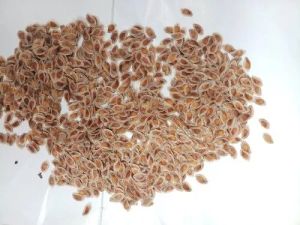
Silver Oak Tree Seeds
3,000 Per Kilogram
1 Kilogram (MOQ)
Application : Plantation
Country of Origin : Made in India

Phyllanthus Emblica Seeds
Offered in the market at cost-effective rates, our exquisite range of Phyllanthus Emblica Seeds is loved by our privileged clients, and for maximum quality maintenance, we abide by the set industry norms and regulations. We never compromise on quality, and keeping the cut-throat competition in mind, we offer the finest and pure range of Phyllanthus Emblica Seeds to our clients. While the taste of Phyllanthus Emblica Seeds (amla) is sour, bitter and astringent, it is quite fibrous, and it is common to eat gooseberries steeped in salt-water and turmeric to make the sour fruits palatable. While we pack the Phyllanthus Emblica Seeds using high-grade materials, and ensure timely delivery of the product, we source them from reliable vendors in the market. We are located in Dehradun, Uttarakhand.
...more
Lemon Grass Seeds
2,000 Per Kilogram
1 Kilogram (MOQ)
Application : Fodder
Type : Natural
Shelf Life : 1 Years
Purity : 100%
Country of Origin : Made in India
...more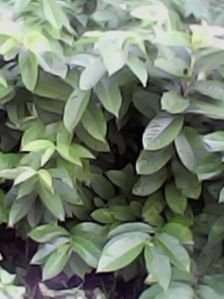
Lagestroemia flos-reginae
We are offering lagestroemia flos-reginae. Crape myrtles are chiefly known for their colorful and long-lasting flowers which occur in summer. Most species of lagerstroemia have sinewy, fluted stems and branches with a mottled appearance that arises from having bark that sheds throughout the year. The leaves are opposite and simple, with entire margins, and vary from 5–20 cm (2–8 in). While all species are woody in nature, they can range in height from over 100 feet to under one foot; most, however, are small to medium multiple-trunked trees and shrubs. The leaves of temperate species provide autumn color. Flowers are borne in summer and autumn in panicles of crinkled flowers with a crepe-like texture. Colors vary from deep purple to red to white, with almost every shade in between. Although no blue-flowered varieties exist, the flowers trend toward the blue end of the spectrum with no orange or yellow except in stamens and pistils. The fruit is a capsule, green and succulent at first, then ripening to dark brown or black dryness. It splits along six or seven lines, producing teeth much like those of the calyx, and releases numerous, small, winged seeds. In their respective climates, both subtropical and tropical species are common in domestic and commercial landscapes. The timber of some species has been used to manufacture bridges, furniture, and railway sleepers, but in vietnam's cat tien national park, the dominant stands of lagerstroemia calyculata in secondary forest are thought to have survived (after episodes of logging) due to the low quality of wood. Lagerstroemia species are used as food plants by the larvae of some lepidoptera (moth and butterfly) species including endoclita malabaricus. The leaves of l. Parviflora are fed on by the antheraea paphia moth which produces the tassar silk (tussah), a form of wild silk of commercial importance in india.
...more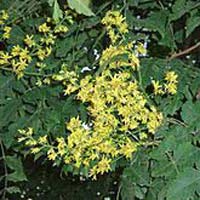
Koelreuteria Apiculata (Gulabi Tun)
We are offering koelreuteria apiculata (gulabi tun). It is a small to medium-sized deciduous tree growing to 7 m (23 ft) tall, with a broad, dome-shaped crown. The leaves are pinnate, 15–40 cm (6–16 in) long, rarely to 50 cm (20 in), with 7-15 leaflets 3–8 cm long, with a deeply serrated margin; the larger leaflets at the midpoint of the leaf are sometimes themselves pinnate but the leaves are not consistently fully bipinnate as in the related koelreuteria bipinnata. The flowers are yellow, with four petals, growing in large terminal panicles 20–40 cm (8–16 in) long. The fruit is a three-parted inflated bladderlike pod 3–6 cm long and 2–4 cm broad, green ripening orange to pink in autumn, containing several dark brown to black seeds 5–8 mm diameter.
...more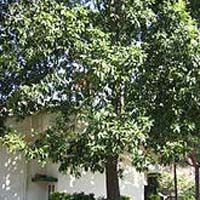
Elaeocarpus Ganitrus (Rudraksh)
Rudraksha, also rudraksh, sanskrit: rudrākṣa ("rudra's eyes"), is a seed traditionally used for prayer beads in hinduism . The seed is produced by several species of large evergreen broad-leaved tree in the genus elaeocarpus, with elaeocarpus ganitrus being the principal species used in the making of organic jewellery or mala. Rudraksha, being organic, is preferentially worn without contact with metal; thus on a cord or thong rather than a chain. Usually the beads of rudraksha are strung together as a mālā. Traditionally, it is believed that the number of beads used should be 108 plus one. The extra bead is the bindu. If the mālā lacks a bindu, the energy is said to become cyclical and wearers who are sensitive may become dizzy. When the beads are stringed, it is advised that they be strung with either a silk thread or a cotton thread. If the rudraksha is threaded, it is advised to change the thread every six months to prevent the thread from snapping and the 109 beads from scattering. The rudraksha mālā may also be strung with either copper, silver or gold, typically by a jeweler. A common issue with mālās wired with such metals is the mālā being tied too tightly. This may result in the insides of the rudraksha seeds cracking and crumbling from excessive pressure. Thus, is necessary to ensure that the mālā is tied loosely. The mālā can be worn all the time, including when showering. When bathing in cold water baths without chemical soaps, it is beneficial for the water to flow over it and upon the body. Wearing the mālā while in contact with chemical soaps and warm water is best avoided, however, as it can result in the rudraksha becoming brittle and eventually cracking.
...more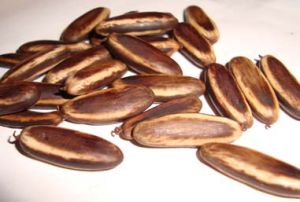
Delonix Regia
We are instrumental in offering a qualitative range of Delonix Regia at market leading prices, and being the most renowned suppliers of Delonix Regia, we pride in offering the finest and purest range. We are based in Dehradun, Uttarakhand. Our team of workers prepares the Delonix Regia under hygienic and controlled conditions, and Delonix Regia is noted for its fern-like leaves and flamboyant display of flowers. Being a species of flowering plant in the family fabaceae, it is grown as an ornamental tree, and in English, it is given the name royal poincianao r flamboyant.
...more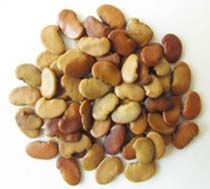
Dalbergia Sissoo
Due to the dedicated support of our well-trained and qualified experts, we are able to successfully provide a diverse range of Dalbergia Sissoo at highly competitive rates. Being the main suppliers of Dalbergia Sissoo, we offer pure and defect-free Dalbergia Sissoo to our clients worldwide. Before supplying the Dalbergia Sissoo, we conduct quality evaluation tests to check their quality, and various other parameters. Known as a premier timber species of the rosewood genus, it is used as fuel wood and for shade and shelter. We are located in Dehradun, Uttarakhand. Sheesham is usually dried up before being used in furniture manufacturing, a process commonly known as seasoning. Locally sheesham is left in wide open areas to dry up under the sun for about 6 months. Commercially sheesham is dried up in closed chambers with hot air circulation for about 7 days to 15 days depending on weather conditions. The ideal moisture level is supposed to be 5-6 % for thinner pieces and upto 11% for thicker ones, depending on use. Anything lower than this can be harmful for sheesham made products as it may cause sudden cracking. Sheesham is among the finest cabinet and veneer timbers. It is the wood from which 'mridanga', the rajasthani percussion instrument, are often made. In addition to musical instruments, it is used for plywood, agricultural tools, carvings, boats, skis, flooring, etc. The heartwood is golden to dark brown; the sapwood, white to pale brownish white. The heartwood is extremely durable (the specific gravity is 0.7 – 0.8) and is very resistant to dry-wood termites; but the sapwood is readily attacked by fungi and borers. Dalbergia sissoo is known to contain the neoflavonoid dalbergichromene in its stem-bark and heartwood.
...more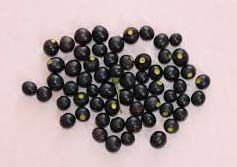
Cinnamomum Camphora
We are the main suppliers of Cinnamomum Camphora from Dehradun, Uttarakhand. We pride in offering the finest quality of Cinnamomum Camphora to our clients at reasonable rates in the market. Our team of skilled experts processes the Cinnamomum Camphora hygienically and as per the international industrial standards. The Cinnamomum Camphora is sourced from reliable vendors in the market. Our variety of Cinnamomum Camphora is unique and only available with us. While the Cinnamomum Camphora is used for many centuries as a culinary spice, a component of incense, and as a medicine, it is also used as an insect repellant and flea-killing substance.Camphora is native to korea jeju, taiwan, southern japan, southeast china, and indochina, where it is also cultivated for camphor and timber production. The production and shipment of camphor, in a solid, waxy form, was a major industry in taiwan prior to and during the japanese colonial era (1895–1945). It was used medicinally and was also an important ingredient in the production of smokeless gunpowder and celluloid. Primitive stills were set up in the mountainous areas in which the tree is usually found. The wood was chipped; these chips were steamed in a retort, allowing the camphor to crystallize on the inside of a crystallization box, after the vapour had passed through a cooling chamber. It was then scraped off and packed out to government-run factories for processing and sale. Camphor was one of the most lucrative of several important government monopolies under the japanese.
...more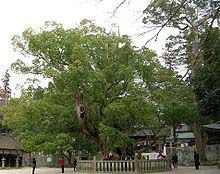
Cinamomum Camphor (Kapoor)
We are offering cinamomum camphor (kapoor).Camphor is a white crystalline substance, obtained from the tree c. Camphora. Camphor has been used for many centuries as a culinary spice, a component of incense, and as a medicine. It is also an insect repellent and a flea-killing substance.C. Camphora is native to korea jeju, taiwan, southern japan, southeast china, and indochina, where it is also cultivated for camphor and timber production. The production and shipment of camphor, in a solid, waxy form, was a major industry in taiwan prior to and during the japanese colonial era (1895–1945). It was used medicinally and was also an important ingredient in the production of smokeless gunpowder and celluloid. Primitive stills were set up in the mountainous areas in which the tree is usually found. The wood was chipped; these chips were steamed in a retort, allowing the camphor to crystallize on the inside of a crystallization box, after the vapour had passed through a cooling chamber. It was then scraped off and packed out to government-run factories for processing and sale. Camphor was one of the most lucrative of several important government monopolies under the japanese.
...more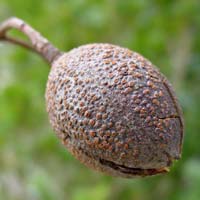
Chukrasia Tabularis
The Chukrasia Tabularis offered by us is exemplary for its fine quality, and classic engineering. Our well-qualified and trained professionals work hard to hygienically process the Chukrasia Tabularis using advanced technology and modern equipments. We are one of the most well-established suppliers of Chukrasia Tabularis, and we cater to the bulk requirements and ensure timely delivery of the product. Owing to its medicinal properties, the Chukrasia Tabularis is widely used in Ayurveda as an important medicinal plant. While the Chukrasia Tabularis is native to Bangladesh, Cambodia, China, India, Indonesia, Laos, Malaysia, Myanmar, Sri Lanka, Thailand, and Vietnam, it is common in many western countries, too. We package the Chukrasia Tabularis using high-grade material, and deliver it timely to our esteemed clients. We are located in Dehradun, Uttarakhand.
...more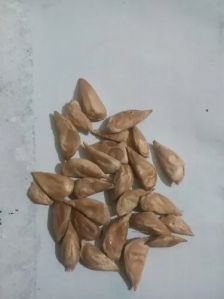
Cedrus Deodara Seeds
1,000 Per Kilogram
Application : Plantation
Type : Natural
Shelf Life : 2 Months
Country of Origin : Made in India
...more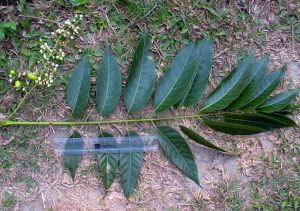
Cedrela Toona
If you need reliable and trustworthy Cedrela Toona from Dehradun, Uttarakhand, you can place your order with us, and we accept bulk orders, too. Being the largest suppliers of Cedrela Toona, we offer superior quality Cedrela Toona at market leading prices. Being one of Australias few native deciduous trees, the timber is red in color, and it is valued and used extensively for furniture, wood paneling, and construction including shipbuilding. While we guarantee high efficiency products, and dont compromise on quality, we process the Cedrela Toona using high-grade materials, modern equipments, and latest technology. It is one of australia's few native deciduous trees. The timber is red in colour, easy to work and very highly valued. It was used extensively for furniture, wood panelling and construction, including shipbuilding, and was referred to as "red gold" by australian settlers. Heavily and unsustainably exploited in the 19th century and early 20th century, almost all the large trees have been cut out and the species is essentially commercially extinct.[8] availability of this timber is now limited. Timber is currently also harvested in new guinea. Although it is not generally a viable plantation species, trees are regularly harvested by forestry in the atherton region of queensland. It grows best in an environment with high light levels, however in the relative darkness of the rainforest understory, it is less susceptible to attack by the cedar tip moth, which lays its eggs on the tree’s leading shoot, allowing the larvae to burrow into the stem, causing dieback and a multi-branched tree with little commercial value. The tree exudes a chemical that the female cedar tip moth seeks out.
...more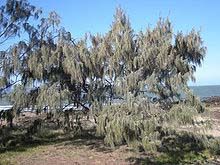
Casuarina Equisetifolia
We are offering casuarina equisetifolia is an evergreen tree growing to 6–35 m (20–115 ft) tall. The foliage consists of slender, much-branched green to grey-green twigs 0.5–1 mm (0.020–0.039 in) diameter, bearing minute scale-leaves in whorls of 6–8. The flowers are produced in small catkin-like inflorescences; the male flowers in simple spikes 0.7–4 cm (0.28–1.57 in) long, the female flowers on short peduncles. Unlike most other species of casuarina (which are dioecious) it is monoecious, with male and female flowers produced on the same tree. The fruit is an oval woody structure 10–24 mm (0.39–0.94 in) long and 9–13 mm (0.35–0.51 in) in diameter, superficially resembling a conifer cone made up of numerous carpels each containing a single seed with a small wing 6–8 mm (0.24–0.31 in) long. Like some other species of the genus casuarina, casuarina equisetifolia is an actinorhizal plant able to fix atmospheric nitrogen. In contrast to species of the fabaceae family of plants (e.g., beans, alfalfa, acacia), casuarina harbours a symbiosis with a frankia actinomycete.
...more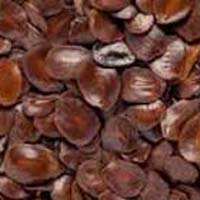
Cassia Siamea
It gives us immense pleasure to bring forth the purest and finest range of Cassia Siamea to our esteemed clients. Hailing from Dehradun, Uttarakhand, our exquisite range of Cassia Siamea are safe to consume, contains low percentage of admixture, and free from contamination. We process the Cassia Siamea as per the industry protocols, and before supplying them, they are quality-tested under the advanced processing units. While the Cassia Siamea are ideally used as shade tree in cocoa, coffee and tea plantations, it is also known as Siamese Cassia, Kassod Tree, Cassod tree and Cassia Tree.
...more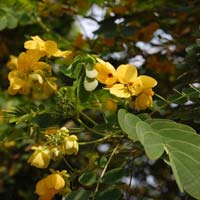
Cassia Glauca
For many years, we are enjoying the distinct position of being the undisputed suppliers of Cassia Glauca from Dehradun, Uttarakhand. While the Cassia Glauca can be utilized as ornamental plants, and used in reforestation projects, they are also used as food plants by the caterpillars of many lepidopteran taxa. We carefully process the Cassia Glauca to make sure they are free from impurities, and can be purchased at market leading prices.
...more
Bamboo Seeds
200 Per Kilogram
Being the leading suppliers of Bamboo Seeds from Dehradun, Uttarakhand, we offer supreme quality Bamboo Seeds to our Indian and global clients. Our team of professionals processes the Bamboo Seeds as per the international industry standards to check their quality, and make sure they are hygienic, free from impurity, and suitable to be supplied to the clients. We also supply bulk quantities to our clients. While the Bamboo Seeds are extensively used for building materials, as a food source, and as a versatile raw product, we package them in PP bags. The USP of Bamboo Seeds is that they are the fastest growing plants in the world, and certain species of bamboo can grow 91 cm within a 24-hour period, at a rate of almost 4 cm an hour.
...more
Cassia Fistula
We are the name to reckon with bulk orders of Cassia Fistula from Dehradun, Uttarakhand. For years, we have maintained our goodwill among the topmost suppliers of Cassia Fistula. Owing to its long shelf life, our unique and pristine range of Cassia Fistula is in high demand, and it is processed using high-grade raw materials, and checked on numerous parameters of quality in order to deliver the perfect range. The golden shower tree is a medium-sized tree, growing to 10–20 m (33–66 ft) tall with fast growth. The leaves are deciduous, 15–60 cm (5.9–23.6 in) long, and pinnate with three to eight pairs of leaflets, each leaflet 7–21 cm (2.8–8.3 in) long and 4–9 cm (1.6–3.5 in) broad. The flowers are produced in pendulous racemes 20–40 cm (7.9–15.7 in) long, each flower 4–7 cm (1.6–2.8 in) diameter with five yellow petals of equal size and shape. The fruit is a legume, 30–60 cm (12–24 in) long and 1.5–2.5 centimetres (0.59–0.98 in) broad, with a pungent odor and containing several seeds. The tree has strong and very durable wood, and has been used to construct "ahala kanuwa", a place at adams peak, sri lanka, which is made of cassia fistula (ahala, ehela, or aehaela, in sinhala heartwood.
...more
Bottle Brush
While our name features in the list of the most distinguished suppliers of Bottle Brush from Dehradun, Uttarakhand, our state-of-the-art manufacturing unit, and experienced team of workers carefully manufactures the Bottle Brush using advanced technology and modern equipments. Our pristine range of Bottle Brush is in high demand, and we package them safely, and deliver it timely to our esteemed clients. While Bottle Brush are mostly found in the more temperate regions of Australia, especially along the east coast, they thrive on regular watering. Features : Bottlebrush seed capsules callistemon citrinus callistemon pallidus callistemon viminalis callistemon viminalis taxonomy The genus callistemon was first formally described in 1814 by robert brown.[5] in his description he noted that the genus includes “those species of metrosideros that have inflorescence similar to that of melaleuca, and distinct elongated filaments.” carl linnaeus had described the genus ‘’melaleuca’’ in 1767[6] and in 1867, george bentham brought all the metrosideros species into melaleuca. Bentham described melaleucas as having stamens united in bundles opposite the (five) petals. In his 1864 description of callistemon salignus in fragmenta phytographiae australiae, ferdinand von mueller noted that the difference between the genera was “entirely artificial” (“omnino artificiale").] george bentham also noted in ‘’flora australiensis’’ that callistemon “passes gradually into melaleuca, with which f. Mueller proposes to unite it.”in 1876, henri ernest baillon proposed in histoire des plantes that callistemon, as well as calothamnus and lamarchea be merged into melaleuca. Nevertheless, most authors had preserved the distinction between the two genera ‘’callistemon’’ and ‘’melaleuca’’ until 1998. In that year, in recognition of the fact that the callistemons and melaleucas on new caledonia were clearly related, lyndley craven and j.w. Dawson transferred the callistemons.
...more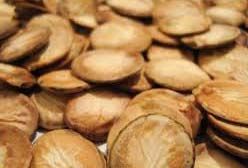
Bauhinia Purpurea
We have carved a niche in the industry for our purest range of Bauhinia Purpurea, and we pride in offering it at low market cost. The Bauhinia Purpurea is an orchid tree, and it is widely admired for its large, fragrant, and beautiful purple, pink, lavender, red, or blue orchid-like flowers. Owing to its medicinal properties, Bauhinia Purpurea is used in countries like India, Pakistan, and Sri Lanka in traditional medicine as treatments for many ailments, such as ulcers, wounds, swollen glands, and stomach tumors. Our team of skilled experts efficiently processes the Bauhinia Purpurea using advanced technology, and latest equipments. The Bauhinia Purpurea guarantees optimum output, and we source them from trusted and reliable vendors in the market. We are located in Dehradun, Uttarakhand. We are offering bauhinia purpurea(kachnar). The orchid tree is a medium-sized tree (1,5,7) native to a variety of habitats in south asia, southeast asia, southern china, and japan (1,2,5,7,8). Admired for its large, fragrant, and beautiful purple, pink, lavender, red, or blue orchid-like flowers(3,5,7), the orchid tree is also special for its extraordinary seed dispersal ability: it ejects its own seeds as far as 15 meters (49 feet) away from the tree, a possible record (6). Throughout history, this unusual tree has been particularly valuable to people for medicinal purposes. In countries such as india, pakistan, and sri lanka, various parts of the orchid tree (including the bark, roots, and flowers) have been and continue to be used in traditional medicine as treatments for many ailments, such as ulcers, wounds, swollen glands, and stomach tumors(5,8). Ongoing research into the chemical components and medicinal properties of the plant suggests that the orchid tree contains a host of chemicals with, among other benefits, antioxidant, antibacterial, anti-inflammatory, and even cancer-fighting effects (5,8). The fruit(1,2,5), seeds (2,5), leaves(1), flowers(1), and flower buds(1) of the orchid tree are also used as a food source in some cultures, and the seeds have been to shown to have significant nutritional value(2). In addition, among some other economic uses of the plant (1,7), in places such as nepal the leaves of the orchid tree are used as fodder for domestic animals like sheep, cattle, goats, and buffalo(1,4,5,7).
...more
Areca Palm Seeds
We offer exceptional quality of Areca Palm Seeds to our clients worldwide. We are located in Dehradun, Uttarakhand. We supply a variety of Areca Palm Seeds across the globe, and our team of skilled experts ensures that the Areca Palm Seeds are effective, and processed as per the industrial standards. Our modern and technologically advanced transport facilities ensure prompt and safe delivery of the products to our esteemed customers. While the Areca Palm Seeds are grown as an ornamental plant in gardens in tropical and subtropical regions, it is grown indoors as a houseplant. We are offering dypsis lutescens grows 6–12 m (20–39 ft) in height. Multiple stems emerge from the base. The leaves are arched, 2–3 m (6 ft 7 in–9 ft 10 in) long, and pinnate, with 40-60 pairs of leaflets. It bears panicles of yellow flowers in summer. Offsets can be cut off when mature enough, as a propagation method. It is grown as an ornamental plant in gardens in tropical and subtropical regions, and elsewhere indoors as a houseplant. It has gained the royal horticultural society's award of garden merit. One of several common names, "butterfly palm" refers to the leaves which curve upwards in multiple stems to create a butterfly look. Chrysalidocarpus lutescens (dypsis lutescens).jpg in its introduced range, this plant acts as a supplier of fruit to some bird species which feed on it opportunistically, such as pitangus sulphuratus, coereba flaveola and thraupis sayaca species in brazil.
...more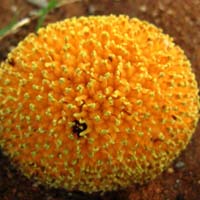
Anthocephalus Cadamba
For several years, we have been the largest suppliers of Anthocephalus Cadamba from Dehradun, Uttarakhand. Not only famous for offering premium quality Anthocephalus Cadamba, our range of Anthocephalus Cadamba is in high demand due to its therapeutic qualities, and healthy benefits. While the Anthocephalus Cadamba can be availed at economical rates in the market, we package them using high-grade materials, and ensure timely delivery of the product to our esteemed clients. We are offering anthocephalus kadamba (kadam). A fully mature kadam tree can reach up to 45 m (148 ft) in height. It is a large tree with a broad crown and straight cylindrical bole. It is quick growing, with broad spreading branches and grows rapidly in the first 6–8 years. The trunk has a diameter of 100–160 cm, but typically less than that. Leaves are 13–32 cm (5.1–12.6 in) long. Flowering usually begins when the tree is 4–5 years old. Kadam flowers are sweetly fragrant, red to orange in colour, occurring in dense, globular heads of approximately 5.5 cm (2.2 in) diameter. The fruit of n. Cadamba occur in small, fleshy capsules packed closely together to form a fleshy yellow-orange infructescence containing approximately 8000 seeds. On maturing, the fruit splits apart, releasing the seeds, which are then dispersed by wind or rain.some botanical features are detailed below leaves glossy green, opposite, simple more or less sessile to petiolate, ovate to elliptical with dimensions of 15–50 cm (5.9–19.7 in) by 8–25 cm (3.1–9.8 in). Flowers inflorescence in clusters; terminal globose heads without bracteoles, subsessile fragrant, orange or yellow flowers; flowers bisexual, 5-merous, calyx tube funnel-shaped, corolla gamopetalous saucer-shaped with a narrow tube, the narrow lobes imbricate in bud. Stamens 5, inserted on the corolla tube, filaments short, anthers basifixed. Ovary inferior, bi-locular, sometimes 4-locular in the upper part, style exserted and a spindle-shaped stigma. Fruitlets numerous with their upper parts containing 4 hollow or solid structures. Seed trigonal or irregularly shaped.
...more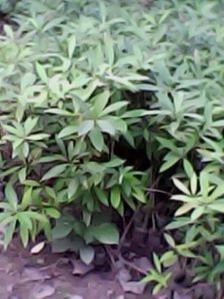
Alstonia Scholaris(Saptparni)
We are offering alstonia scholaris(saptparni). The alstonia scholaris is a glabrous tree and grows up to 40 m tall, its mature bark is grayish and its young branches are copiously marked with lenticels. The upperside of the leaves are glossy, while the underside is greyish.[2] leaves occur in whorls of 3-10; petioles are 1–3 cm; the leathery leaves are narrowly obovate to very narrowly spathulate, base cuneate, apex usually rounded; lateral veins occur in 25-50 pairs, at 80-90° to midvein. Cymes are dense and pubescent; peduncle is 4–7 cm long. Pedicels are usually as long as or shorter than calyx. The corolla is white and tube-like, 6–10 mm; lobes are broadly ovate or broadly obovate, 2-4.5 mm, overlapping to the left. The ovaries are distinct and pubescent. The follicles are distinct and linear. Flowers bloom in the month october. The flowers are very fragrant similar to the flower of cestrum nocturnum. Seeds of a. Scholaris are oblong, with ciliated margins, and ends with tufts of hairs 1.5–2 cm. The bark is almost odourless and very bitter, with abundant bitter and milky sap.
...moreBe first to Rate
Rate ThisOpening Hours